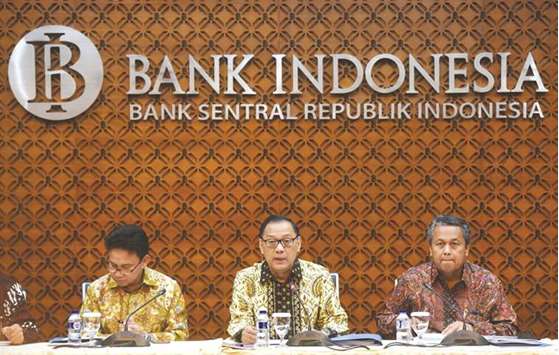Indonesia’s central bank yesterday cut its benchmark policy rate for the first time since October, unexpectedly pulling the trigger in a bid to boost sluggish lending and growth in Southeast Asia’s biggest economy.
In another effort to stoke lending and consumption, Bank Indonesia (BI) also said it would change downpayments on automotive and home loans and review bank liquidity rules.
“The theme of this monetary policy meeting was to lower the benchmark policy rate due to stability and to support economic recovery,” BI governor Agus Martowardojo told reporters.
Martowardojo said external risks, including those involving policy of the US Federal Reserve, had been reduced.
BI cut the 7-day reverse repurchase rate to 4.50% and lowered two other main policy rates.
Indonesia becomes the second major Asian economy to cut its policy rate this year after India on August 2.
In a Reuters poll, 19 out of 20 economists forecast that BI would hold the key rate at 4.75% out of concern changes in other countries’ monetary policies could hurt the rupiah.
“Clearly, BI made use of the opportunity to cut rates: inflation is slower than expected, the rupiah staying relatively stable and external risks seem to be manageable,” said Gundy Cahyadi, a DBS economist in Singapore.
The rupiah this year has been relatively stable and has strengthened 1% against the dollar – significantly less than most Asian currencies have.
Indonesia’s capital and bond markets have had net inflows.
BI said it expects the rupiah to remain stable and rupiah-denominated assets to continue to be attractive.
“There is some risk that BI may follow through with another cut in October, but for now, we think BI may leave rates steady at 4.50% till next year,” said Cahyadi. Twice after Indonesia this month announced that second quarter growth was basically unchanged from January-March, Martowardojo flagged the possibility of monetary easing.
The last benchmark cut was in October, after which BI repeatedly said its policy stance was “neutral” as it watched global changes, including plans by Fed to hike US rates and reduce its balance sheet.
Asked whether BI has changed its stance with yesterday’s cut, Martowardojo said: “BI’s current position remains neutral.”
In 2016, BI slashed the benchmark six times, by a total of 1.5 percentage points, and eased some lending rules in a bid to spur growth.
In April-June, the economy grew 5.01% from a year earlier.
That was the same as in the first quarter, and below market expectations and BI’s forecast, as private consumption remained lethargic.
June’s annual loan growth of 7.7% was the weakest in eight months.
After yesterday’s cut, “rates in other instruments would go down. The structure of monetary operation’s interest rates would go down.
This will force banks to use their available liquidity to extend it for lending,” BI deputy governor Perry Warjiyo said. Other Southeast Asian nations had higher growth in the second quarter than the first this year, boosted by solid exports.
Indonesia’s exports have improved, but its growth depends far more on consumption than trade. Since 2014, Indonesia’s annual growth has remained around 5%, well below President Joko Widodo’s target of 7%. BI saw room to cut because of lower inflation, a healthy current account deficit outlook and fewer 2017 Fed rate hikes than initially expect, Warjiyo said. Martowardojo said BI plans to change downpayment rules for automotive and home loans to apply differently, by regions.
Last year, BI eased the loan-to-value (LTV) ratio requirement, lowering the minimum downpayment nationally to between 15-25% from 20-40%.
The central bank is also reviewing rules on loan to financing ratios, which could increase lending.

Bank Indonesia governor Agus Martowardojo (centre) along with senior deputy governor Mirza Adityaswara (left) and deputy governor Perry Warjiyo attend a news conference at the bank’s headquarters in Jakarta yesterday. BI cut the 7-day reverse repurchase rate to 4.50% and lowered two other main policy rates.


